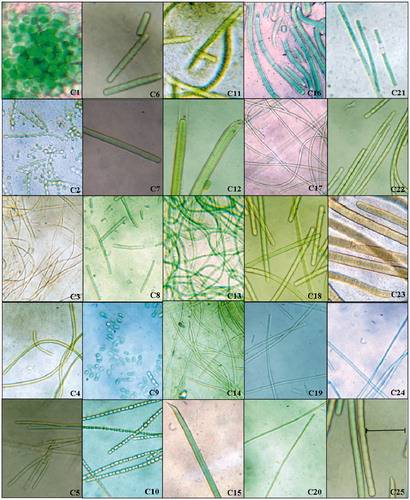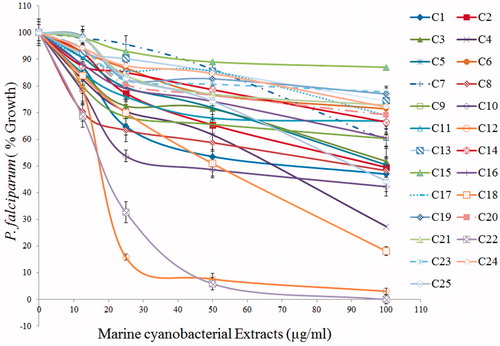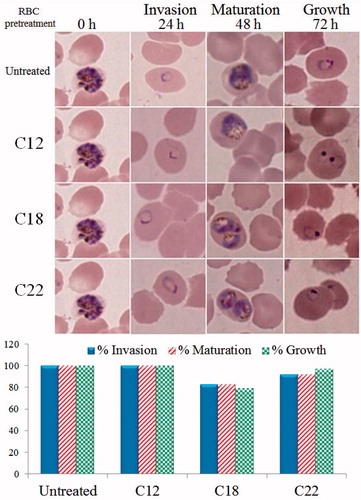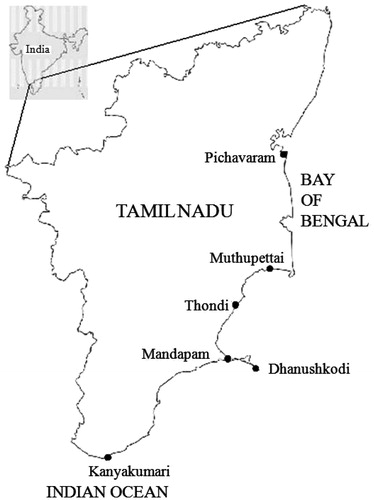Figures & data
Table 1. Antimalarial properties of marine cyanobacterial secondary metabolites.
Table 2. Morphological features of cyanobacterial species and their antiplasmodial activity against Pf3D7.
Figure 2. Micrographs of cyanobacterial isolates at 100×. Twenty-five different strains of cyanobacteria were isolated from various coastal regions of Tamil Nadu. The monocultures of all isolated cyanobacteria were examined under light microscope (Binocular microscope inverted epifluorescence Model XTS, Italy) at the same magnification; the scale bar 50 µm applies to all panels and the genera of cyanobacteria were identified following Desikachari (Citation1959) manual. C12 (Lyngbya aestuarii CNP 1005) and C22 O. boryana BDU 91451) showed promising antiplasmodial activity (IC50 = 18 µg mL−1) against Pf3D7. indicates the names of genera for the strains in the figure.

Figure 3. Antiplasmodial activity of extracts of the marine cyanobacterial species. Concentration-dependent inhibition of blood-stage Plasmodium falciparum growth by cyanobacterial crude extracts as measured by SYBR Green fluorescence assay. Extract numbers and the corresponding color codes are indicated in the strip on the right. Standard deviation bars at each data point have been calculated from triplicate observations.

Table 3. Antiplasmodial potency, resistance and selectivity indices of potent cyanobacterial extracts.
Figure 4. Pretreatment of host red blood cells with antiplasmodial extracts to find if their action is against host red blood cells. The aim of the experiment was to judge if the extracts are selectively toxic to the malaria parasite or that they are toxic to host red blood cells leading to indirect antiplasmodial toxicity. Uninfected human red blood cells were incubated (48 h, 37 °C) with extracts of C12, C18, and C22 each at its antiplasmodial IC100. Results shown above indicate that there was no significant effect of pre-exposure on invasion, maturation, or growth of the malaria parasite suggesting the selective action of extracts on Plasmodium falciparum with no significant toxicity against host red blood cells.

Figure 5. Morphology and molecular identification of Lyngbya aestuarii CNP 1005, the strain showing the most potent antiplasmodial action in the present studies. (A) Microscopic image of L. aestuarii CNP 1005, (B) amplification of L. aestuarii 16S rRNA, (C) amplified 16S rRNA sequence using forward primer, and (D) phylogenetic tree.

Table 4. Biological activities of compounds produced by marine cyanobacteria.

